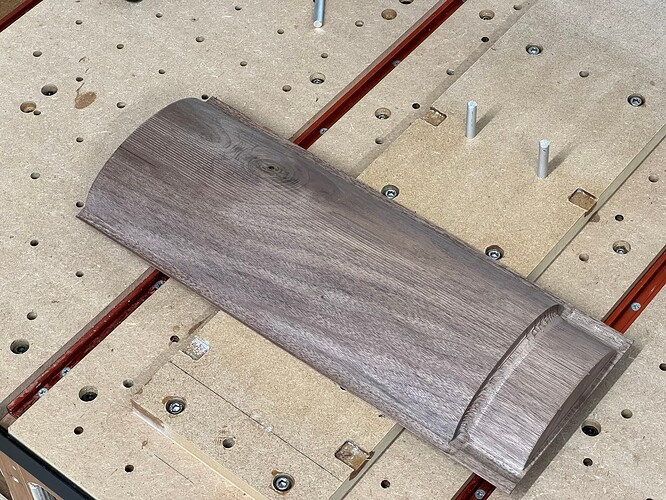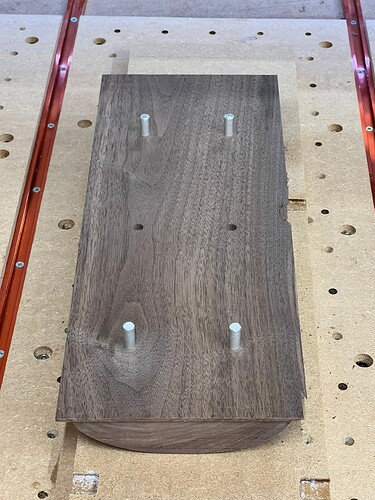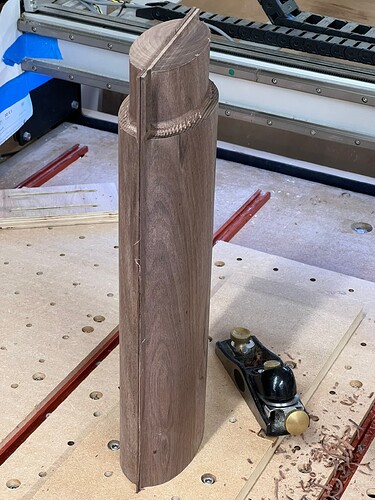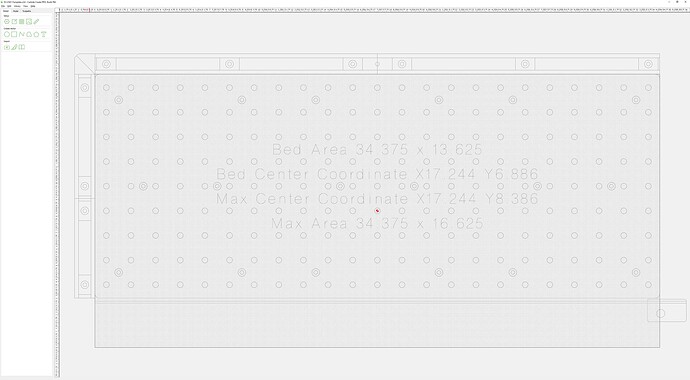I’ve found the following to give me decent precision and reasonably low mistake rates.
Bolt down a temporary fixture board, surface it flat and machine the front and left sides square and straight.
To get a really good repeatable zero I put a little CA glue in the sides of the MDF at the front left corner and re-machine the two edges, that gives a smooth and solid pair of faces to zero off.
Zeroed off that front left corner I then bore the pin holes I need for this project (you can re-use the fixture a few times before it’s too swiss cheese). I now have a repeatable zero and bored holes in known locations from that zero. If you can do these on a regular pitch, that makes re-use easier. I also like to put a bit of CA glue in these, set it with activator and then re-run the boring toolpath to get a good solid repeatable pin fit.
I then put the stock on top of the fixture, align it by eye and bore the matching holes for the locating pins and, if necessary, surface the stock. Now attach the stock to the fixture using the pins.
I then machine the first face, using the fixture as the Z=0 point, this way the stock just needs to be ‘thick enough’ and I can cut all the way through accurately.
Once that’s done, flip the workpiece in whichever direction you flipped it in CAM, put it on the pins and machine the other side, again, using the fixture as Z=0 and the same X=0, Y=0 off the front left corner.
You can keep doing this for many parts over power cycles by just re-zero-ing off the fixture, you can even put an old fixture back on the machine by running up the side with a dial indicator in the collet (best done at 0 RPM).
In this particular case, the two ‘sides’ were two separate workpieces which were to be glued together to make a single ellipsoid profile table leg and top through mortise.



